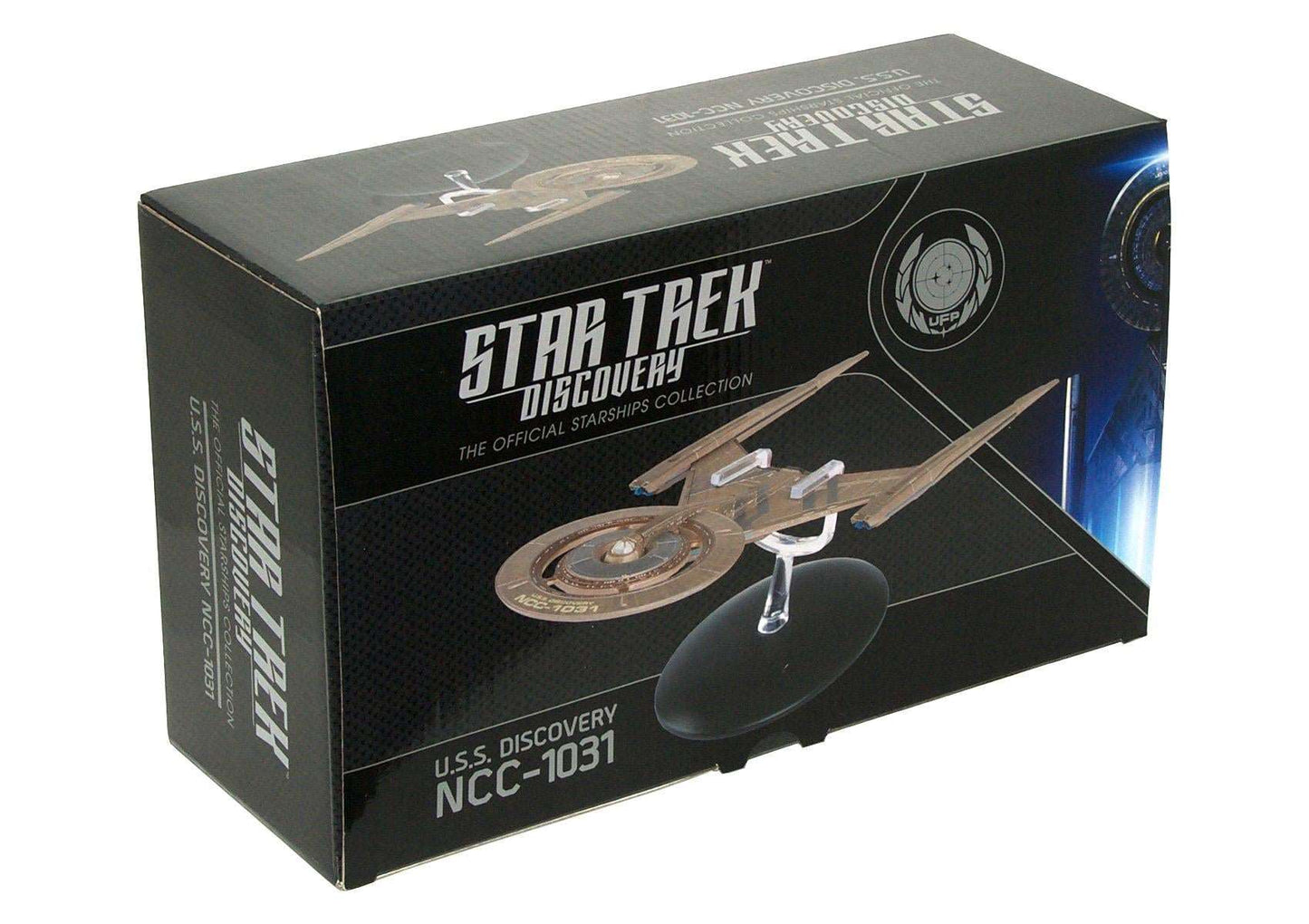Eaglemoss
#02 U.S.S. Discovery NCC-1031 (Crossfield class) Starship Die-Cast Model Discovery SSDUK002 (Eaglemoss / Star Trek)
#02 U.S.S. Discovery NCC-1031 (Crossfield class) Starship Die-Cast Model Discovery SSDUK002 (Eaglemoss / Star Trek)
Couldn't load pickup availability
Shipping
Shipping
We ship worldwide, and all items are sent fully tracked.
- 🇺🇸 US / 🇨🇦 Canada - (4 - 7 Business Days)
- 🇬🇧 UK - FREE (Next Working Day)
- 🇪🇺 EU - (3 - 5 Business Days)
- 🌏 Rest of the World - (7 - 14 Business Days)
Same-day dispatch:
- All of our in-stock items are available for immediate despatch.
- If you clear checkout before 4pm (UTC) Monday to Friday, your order will shipped the same day.
- Orders received after this will be dispatched the following working day.
Please note that international orders may be subject to customs duties and taxes. These charges vary depending on the country of destination and the value of the goods. Customers are responsible for paying any applicable customs fees.
Returns
Returns
30 day returns. If you need to return your purchase, we'll offer a full refund or exchange as long as:
- It's been fewer than 30 days since you received your item
- It's in resalable condition e.g. tags still attached, packaging is unopened, item has not been stained or marked.
"The needs of the many outweigh the needs of the few." - Science Officer Spock
The USS Discovery (NCC-1031) was a 23rd century Federation Crossfield-class starship operated by Starfleet, under the command of Captain Gabriel Lorca.
Discovery was launched into service from the San Francisco Fleet Yards, Earth. By November 2256, it was still considered impressively new, fresh out of the shipyards, and equipped with some of Starfleet's most advanced technologies (in contrast with the relatively old USS Shenzhou).
As a Crossfield-class starship, Discovery was officially designated a science vessel, though it was capable of defending itself. The ship's facilities were capable of accommodating three hundred discrete scientific missions, a Starfleet record.
Due to the outbreak of the Federation-Klingon War of 2256, a vessel as new as Discovery would normally have been pressed into service on the front lines, even though it would have a relatively small impact compared to other, more combat-oriented vessels. Instead, Discovery was placed under the command of Captain Lorca and given a clandestine mission to conduct black ops scientific research, developing top-secret weapons and technologies that would help the Federation win the war. Several of these experiments had the potential to physically endanger the ship itself and its crew: hazardous situations caused by the black ops experiments being activated were addressed by declaring a "Black alert" (which was not a standard protocol on Starfleet vessels).
Both Discovery and its sister ship, the USS Glenn, were equipped with an experimental spore drive for field testing. Much research and refinement remained to be done as of late 2256, but if perfected it had the potential to instantly traverse vast galactic distances in the blink of an eye. Discovery only used it in short bursts while attempting to perfect it into a reliable drive system, however: in contrast, the crew of Glenn took bolder risks to develop it more quickly, resulting in an accident which killed the entire crew and crippled the ship.
Discovery was actually built from the ground up to be a test bed for the experimental spore drive, based on the research of Paul Stamets and his colleagues. Stamets had intended his research to pursue purely theoretical knowledge and peaceful applications, but with the outbreak of war, Discovery was rapidly constructed to perfect the military applications of his research.
Due to the top secret (and in some cases dangerous) research projects being conducted on Discovery, its internal security was much more rigid and compartmentalized than was regular protocol on Starfleet vessels: Breath print identification locks were used to restrict access to different sub-sectors. It also possessed a disproportionately prominent and well-armed security detail, standing guard at various restricted access points throughout the ship. These guards were outfitted with tactical gear bearing a "black star" uniform insignia, unlike the normal silver Starfleet delta insignia.
Length 10 Inches.
















